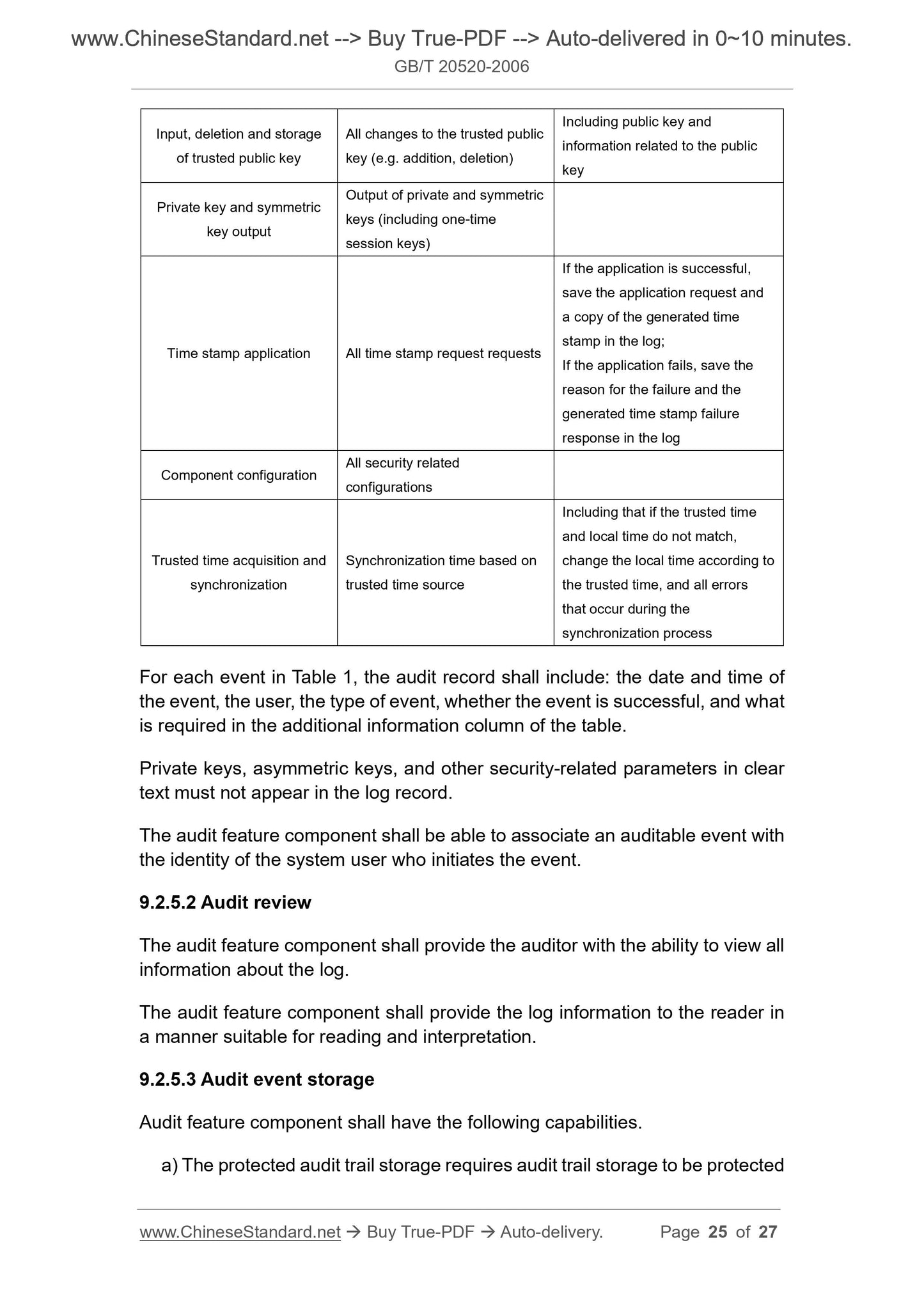1
/
of
11
www.ChineseStandard.us -- Field Test Asia Pte. Ltd.
GB/T 20520-2006 English PDF (GB/T20520-2006)
GB/T 20520-2006 English PDF (GB/T20520-2006)
Regular price
$150.00
Regular price
Sale price
$150.00
Unit price
/
per
Shipping calculated at checkout.
Couldn't load pickup availability
GB/T 20520-2006: Information security technology - Public key infrastructure - Time stamp specification
Delivery: 9 seconds. Download (and Email) true-PDF + Invoice.Get Quotation: Click GB/T 20520-2006 (Self-service in 1-minute)
Newer / historical versions: GB/T 20520-2006
Preview True-PDF
Scope
This Standard specifies the requirements for time stamp system componentcomposition, time stamp management, time stamp format, and time stamp
system security management.
This Standard is applicable to the design and implementation of time stamp
systems. The testing of time stamp system and product procurement can also
be used as reference.
Basic Data
| Standard ID | GB/T 20520-2006 (GB/T20520-2006) |
| Description (Translated English) | Information security technology - Public key infrastructure - Time stamp specification |
| Sector / Industry | National Standard (Recommended) |
| Classification of Chinese Standard | L80 |
| Classification of International Standard | 35.040 |
| Word Count Estimation | 18,122 |
| Date of Issue | 2006-08-30 |
| Date of Implementation | 2007-02-01 |
| Quoted Standard | GB 17859-1999; GB/T 20518-2006; GB/T 20273-2006; GB/T 20271-2006; RFC 2630 |
| Regulation (derived from) | China Announcement of Newly Approved National Standards No. 10 of 2006 (No. 97 overall) |
| Issuing agency(ies) | General Administration of Quality Supervision, Inspection and Quarantine of the People's Republic of China, Standardization Administration of the People's Republic of China |
| Summary | This standard specifies the timestamp of the system components, the timestamp format and timing system security management requirements. This standard applies to the design and implementation of the system timestamp, timestamp, system testing and product procurement also refer to the use. |
Share





















